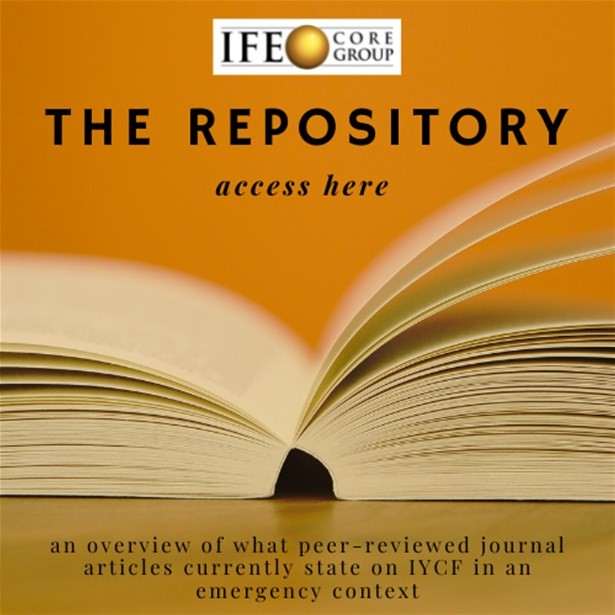Infant and Young Child Feeding In Emergencies (IYCF-E)
-
Scientific Literature Repository
-
Chemical, Biological, Radiological and Nuclear Threats: Guidance for IYCF
Scientific Literature Repository
This repository provides an overview of what peer-reviewed journal articles currently state on Infant and Young Child Feeding in an emergency context. It covers articles published since 1st January 2022.
The repository will be updated with the latest research every three months, thanks to a collaboration between the Johns Hopkins Center for Humanitarian Health at Johns Hopkins Bloomberg School of Public Health, the Friedman School of Nutrition Science and Policy at Tufts University, and the Gillings School of Global Public Health at the University of North Carolina at Chapel Hill.
Click here to access the repository

Back to Top

